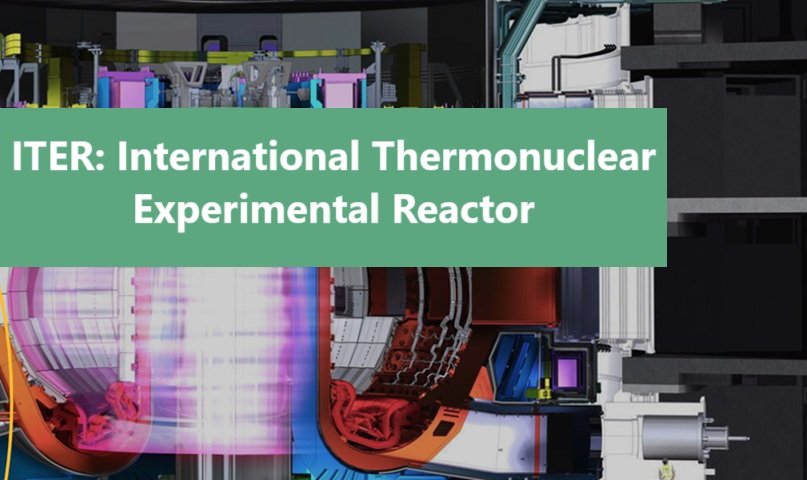
Introduction
The International Thermonuclear Experimental Reactor (ITER) is one of the most ambitious energy projects in the world, aimed at demonstrating the feasibility of nuclear fusion as a large-scale and carbon-free source of energy. Located in Saint-Paul-lès-Durance, France, ITER is a collaboration between 35 nations working together to build the world’s largest tokamak, a magnetic confinement device designed to prove the viability of fusion power.
ITER is designed to be the final experimental step before the construction of full-scale commercial fusion power plants. It is expected to be a game-changer in global energy production, offering a cleaner and virtually limitless alternative to fossil fuels.
Understanding Nuclear Fusion
What is Nuclear Fusion?
Nuclear fusion is the process that powers the Sun and stars. It involves the merging of two light atomic nuclei to form a heavier nucleus, releasing an enormous amount of energy in the process. Unlike nuclear fission, which splits heavy atoms and produces long-lived radioactive waste, fusion is cleaner, safer, and provides a virtually limitless supply of energy.
The most promising fusion reaction for energy generation involves deuterium and tritium (isotopes of hydrogen), which, when fused, produce helium and a neutron, along with a massive release of energy. This reaction is particularly favorable because:
- The fuel sources (deuterium and lithium for breeding tritium) are abundant.
- It does not produce greenhouse gases.
- There is no risk of catastrophic meltdowns, unlike fission reactors.
Why is Fusion So Difficult to Achieve?
Despite its immense potential, achieving controlled nuclear fusion on Earth is extremely challenging because:
- It requires temperatures over 150 million degrees Celsius—more than 10 times the temperature of the Sun’s core.
- The plasma (hot ionized gas) must be confined long enough for fusion to occur.
- The materials used in the reactor must withstand extreme radiation and heat.
- Tritium, a key fuel component, is rare and must be bred inside the reactor.
Objectives of ITER
The ITER project is designed to achieve several key goals:
- Demonstrate the feasibility of nuclear fusion as an energy source by producing a self-sustaining plasma reaction.
- Sustain a plasma reaction that produces more energy than it consumes (Q ≥ 10), meaning it generates ten times more energy than the power required to heat the plasma.
- Test new materials and technologies for future fusion power plants, ensuring they can withstand extreme conditions.
- Develop solutions for handling the extreme conditions inside a fusion reactor, including dealing with neutron flux and plasma instabilities.
- Advance scientific understanding of plasma physics, which will be crucial for designing the next-generation fusion reactors.
ITER Members and Governance
The ITER project is a multinational collaboration involving seven key members, who contribute financially and through in-kind contributions such as components, expertise, and technology:
- European Union (EU) – (45.6% share) – The largest contributor and host of the project.
- China – (9.1%) – Provides key technological components and R&D.
- India – (9.1%) – Contributes critical engineering components and materials.
- Japan – (9.1%) – Supplies superconducting magnets and diagnostics.
- Russia – (9.1%) – Develops gyrotrons and other key plasma heating technologies.
- South Korea – (9.1%) – Manufactures superconducting magnets and cooling systems.
- United States – (9.1%) – Contributes advanced materials and high-tech components.
These members collectively fund the construction, operation, and research efforts of ITER. The project is overseen by the ITER Organization, which manages the coordination of all contributions and ensures that the project meets its milestones.
How ITER Works
The ITER reactor is based on the tokamak design, a donut-shaped device that uses powerful magnetic fields to confine and control plasma at extreme temperatures. The key components include:
1. Magnetic Confinement System
The plasma inside the tokamak is controlled using strong magnetic fields generated by superconducting magnets. These include:
- Toroidal field magnets: Provide horizontal stability.
- Poloidal field magnets: Shape and control the plasma.
- Central solenoid: Induces the electric current that heats and drives the plasma.
2. Plasma Chamber
The vacuum vessel is a steel chamber where the fusion reaction occurs. It is designed to withstand extreme heat and radiation, acting as the first line of containment.
3. Heating Systems
Since fusion requires ultra-high temperatures, ITER uses multiple heating techniques:
- Neutral beam injection (NBI): Accelerates neutral particles into the plasma to transfer energy.
- Radiofrequency waves: Resonantly heat the plasma particles.
- Ohmic heating: Uses induced electric currents to heat the plasma.
4. Divertor
This is a key component that removes excess heat and impurities from the plasma, helping maintain stable operation.
5. Blanket Modules
These lithium-based modules surround the plasma chamber and serve two functions:
- Capture neutrons to generate heat for electricity production in future reactors.
- Breed tritium fuel, which is required for sustained fusion reactions.
Read this: India’s SpaDeX Mission: A Historic Milestone in Space Exploration
Challenges and Expected Outcomes
Challenges:
- Sustaining a stable plasma reaction for long durations without disruptions.
- Managing extreme heat and radiation levels, which necessitate advanced materials.
- Developing efficient tritium breeding and handling methods, as tritium is rare.
- Scaling up fusion technology to enable commercial energy production.
Expected Outcomes:
- 500 MW thermal output, with at least 10 times more energy produced than input.
- Development of technologies for next-generation fusion power plants.
- Advancements in plasma physics, superconductors, and material science.
Timeline and Future Prospects
- 2007: Construction began.
- 2025 (expected): First plasma operation.
- 2035 (expected): Full power operation with deuterium-tritium fuel.
If successful, ITER will pave the way for future fusion reactors like DEMO (Demonstration Power Plant), which aims to generate electricity for the grid by the 2050s.
Conclusion
ITER represents a major step toward solving the global energy crisis with a sustainable and clean energy source. While significant challenges remain, fusion energy has the potential to revolutionize the way we produce electricity, reducing reliance on fossil fuels and helping combat climate change.
As ITER progresses, it will serve as the foundation for commercial fusion power plants that could supply the world with virtually unlimited energy, making it one of the most important scientific projects of the 21st century.
Explore official Website: https://www.iter.org/




